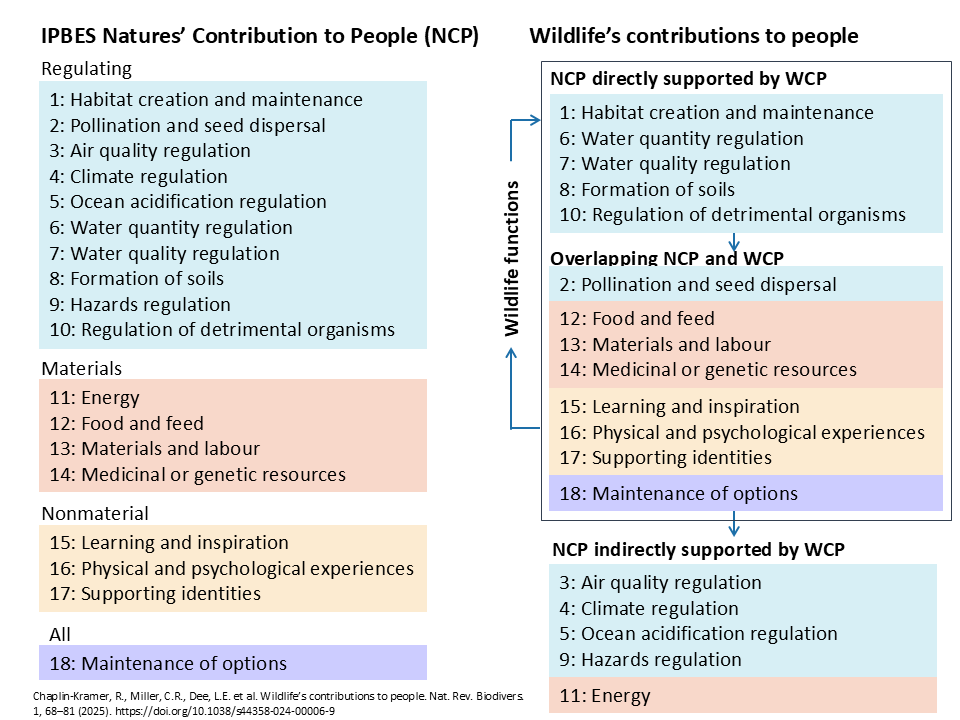Pick Up
1186. Nature’s Contribution to People

1186. Nature’s Contribution to People
In recent years, nature has become more important and incorporated into nature conservation policy and management frameworks.
The Intergovernmental Science-Policy Platform for Biodiversity and Ecosystem Services (IPBES) classifies 18 NCPs into three categories: regulating, material, and nonmaterial.
Regulating: 1: Habitat creation and maintenance, 2: Pollination and seed dispersal, 3: Air quality regulation, 4: Climate regulation, 5: Ocean acidification regulation, 6: Water quantity regulation, 7: Water quality regulation, 8: Formation of soils, 9: Hazards regulation, 10: Regulation of detrimental organisms
Material: 11: Energy, 12: Food and feed, 13: Materials and labour, 14: Medicinal or genetic resources
Nonmaterial: 15: Learning and inspiration, 16: Physical and psychological experiences, 17: Supporting identities
All: 18: Maintenance of options
Based on the concept of ecosystem services, the NCP approach emphasizes the importance of including diverse but undervalued knowledge systems (such as traditional ecological knowledge) in the assessment of human-nature relationships.
On the other hand, the role of wildlife in NCP science is still underestimated. A paper compiled by the World Wide Fund for Nature (WWF) defines wildlife's contributions to people (WCP) and demonstrates that wildlife directly supports 12 of the 18 NCP categories.
If these knowledge gaps on WCPs are left unaddressed, and WCPs are not identified or accounted for in policy and management, both NCP and biodiversity targets may not be met. The paper emphasized the need for advances in wildlife monitoring and modelling to improve understanding of WCPs and their integration into conservation decision-making, as well as address taxonomy, geographic, and cultural biases in existing research.
Reference
Chaplin-Kramer, R., Miller, C.R., Dee, L.E. et al. Wildlife’s contributions to people. Nat. Rev. Biodivers. 1, 68–81 (2025). https://doi.org/10.1038/s44358-024-00006-9
Contributor: IIYAMA Miyuki, Information Program
